History of the Light Bulb
-
1800's
-
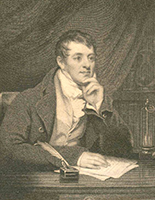 1809
1809
Humphry Davy, an English chemist, used a high powered battery to Induce an electrical current between two strips of charcoal.The current flow through the high impedance material Induced light creating the first arc lamp. -
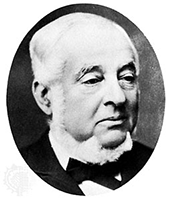
1820
Warren De la Rue made an attempt to produce an incandescent light bulb. He enclosed a platinum coil in an evacuated tube and passed an electric current through it.The design postulated the high melting point of platinum would allow it to operate at a higher temperature and the evacuated chamber atmosphere would contain less gas particles to react with the platinum.
-
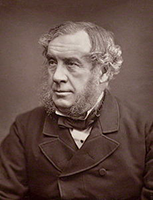 1840
1840
William Robert Grove, an English scientist, succeeded in lighting an auditorium with incandescent lamps. The lamps were constructed of platinum coils encased in an inverted glass sealed by water. Unfortunately, the platinum coil lamps were too expensive and impractical for commercial use.In 1840 William made the first electric light, that was then improved by Thomas Edison. Further in the 1840s he had given an additional account of his creation to the "British Association for the Advancement of Science" assembly in Birmingham, Michael Faraday was interested in Williams invention. On Faraday's invitation Grove showed what he discovered to the influential "Royal Institution Friday Discourse" on March, 13 1840.
-
 1841
1841
Frederik de Moleyns, received the first patent for an incandescent lamp. The design specifications involved mounting a powdered charcoal filament between two platinum wires in a glass bulb under vacuum. As the filament reacted at high temperature with air, the air present In the lamp was evacuated to extend filament life. -
 1845
1845
In 1845 Thomas Wright of London produced the first arc lamp in which the carbons were automatically regulated the carbons being in the form of disks which were slowly rotated by clock work. This was followed by the development of various types of regulating mechanisms by many investigators in Europe and in America who used various devices for striking the arc and feeding the carbons as they were consumed. -
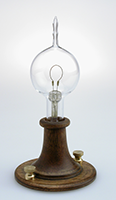 1846
1846
John Doper patented a platinum filament Incandescent electric lamp. The high melting point of the filament allowed it to operate at a higher temperature than many other metallic elements that were tested. Due to a phenomena known as black body radiation, higher temperature filaments produce more visible light. The high cost and scarcity of platinum deemed this design impractical for widespread commercial use. -
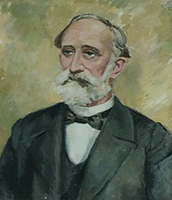 1854
1854
Heinrich Gobel, a German watchmaker who immigrated to New York, used a carbonized bamboo filament secured in a glass container for his Incandescent electric lamp design. -
1860
John T. Way demonstrated that sending electricity through mercury vapor contained in a glass tube could produce light, the precedent for the development of the modern fluorescent light. The electric current that ran through the vaporized mercury excited the gas to a higher energy state. As the excited gas atoms return to their ground energy, their excess energy is given off as visible light. -
 1872
1872
Alexander de Lodyguine, a Russian physicist, developed an incandescent lamp using a graphite filament within a glass bulb filled with nitrogen. The city of St. Petersburg Installed 20001 Lodyguine's bulbs. However, the bulbs were plagued by cost and reliability concerns and proved impractical. -
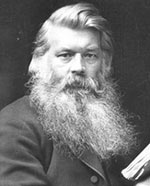 1879
1879
Both Thomas A. Edison of the United States and Joseph Wilson Swan of England, produced carbon filament incandescent lamps that burned for a practical length of time. Edison used carbon fiber derived from cotton. His first bulbs lasted for 13.5 hrs. Later improved bulbs of this design lasted for 40 hours.Sir Joseph Swan began working with the incandescent light long before Edison, however his biggest breakthrough was developed at the same time as Edison. Swan used carbonized paper as a filament in a partially evacuated bulb, this lasted several hours, which was a great achievement compared to the scores of inventors who couldn't get incandescence to last. Swan continued to improve the bulb.
-
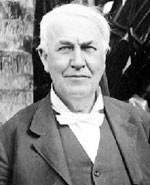 1880
1880
Edison discovered that bamboo produced a better carbon fiber filament. The new lamps lasted for 1200 hours. -
 1893
1893
Heinrich Gobel, won a court decision against Thomas A. Edison and received credit as the inventor of the electric incandescent lamp. -
 1898
1898
Karl Auer, a German scientist, introduced the osmium filament for use in light bulbs. Osmium's high melting point of 2,700°C and increased lifetime at high temperatures were appealing. -
1900's
-
 1902
1902
Light bulbs made with osmium filaments were produced commercially. Although the bulb was more cost effective to operate than the carbon bulb, the scarcity and high cost of osmium substantially raised the price of osmium bulbs, making them impractical. -
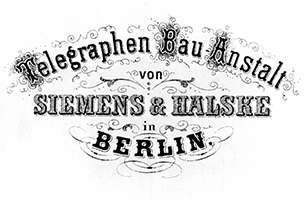 1903
1903
Siemens and Halske of Chariottengurg produced tantalum filament bulbs. Tantalum has a melting point of 2,906°C and excellent practical manufacturing properties. It Is ductile and can readily be drawn into fine filament wire. -
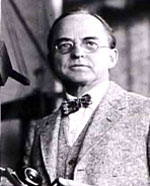 1904
1904
Willis R. Whitney developed a metalized, or metal coated, carbon filament that preceded the developmental the tungsten filament.Willis Whitney counters the threat from the tantalum lamp with the GEM lamp: a unique process which creates a metallized filament. The GEM lamp is used in the Mazda series by General Electric.
-
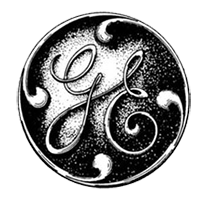 1906
1906
General Electric Company patented a method for making tungsten filaments for use in incandescent lamps.The high melting point of tungsten, (3,410°C) its low vapour pressure ( for example, 10-4 torr at 2,757°C), hence low evaporation rate at high tern-perature, and relatively low cost provided clear advantages over previous filament materials. -
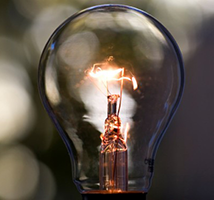 1907
1907
The first commercial tungsten filament for incandescent lamps became available in the United States. Tungsten wire manufacturing was still costly and difficult, but the problem was to soon be overcome. -
 1910
1910
William D. Coolidge, an American, developed an improved method to produce drawn tungsten filaments. In the Coolidge process, a tine tungsten powder is pressed into long bars with one square inch cross-sections.These bars are sintered by electric heating in a pure hydrogen atmosphere to temperatures near the melting point. They are then fabricated into wire by a process known as hot "stretching" within a well-defined range of temperatures, where the fibrous structure is gradually extruded into wire filaments. -
1912
Pacific Lamp opens its doors.

-
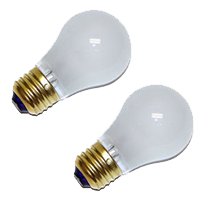 1925
1925
Incandescent bulbs with frosted glass interiors were produced. The frosted glass filters out undesirable wavelengths of light emitted by the filament to produce a "soft" light. -
 1930
1930
Photo flash light bulbs were introduced in photography. -
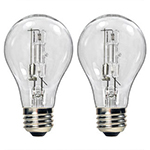 1960
1960
Brighter halogen-filled incandescent lamps were Introduced. Halogen gas slows the filament evaporation rate allowing it to operate at higher temperatures. -
 1991
1991
Philips, a Dutch company, developed a light bulb that uses magnetic Induction to excite a gas to emit light. There are no parts to wear out in this design, so the expected lifetime for a bulb is 60,000 hours.
